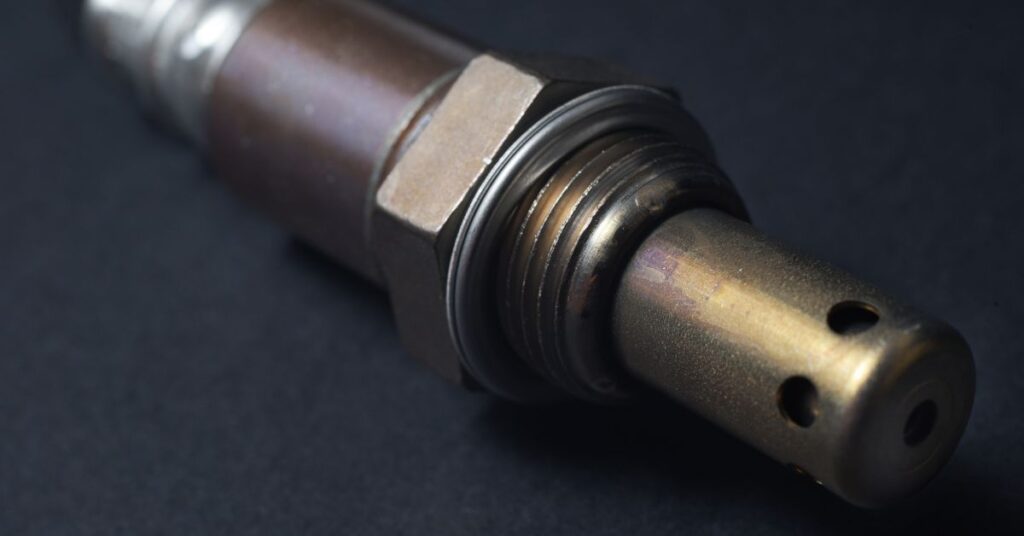
Table of Contents
The oxygen sensor is an integral component of modern vehicles. It is responsible for maintaining optimal engine performance and reducing harmful emissions. While often overlooked, a faulty oxygen sensor can lead to many problems, making timely detection and replacement crucial.
What Does The Oxygen Sensor In Your Car Do?
The oxygen sensor in your car is typically situated in the exhaust system. Its purpose is to measure the amount of oxygen in the exhaust gases. This data is essential as it allows the engine’s computer to adjust the air-to-fuel ratio for optimal combustion. The engine may not receive the correct air-to-fuel mixture if the oxygen sensor fails. This can lead to inefficiencies and potentially damage the engine.
A malfunctioning oxygen sensor can decrease engine performance, increase fuel consumption, and lead to excessive emissions. Replacing a faulty oxygen sensor promptly ensures your vehicle operates efficiently, saves you money on fuel, and reduces your environmental impact.
Signs That The Oxygen Sensor In Your Car Has Gone Bad
Check Engine Light Comes On: The illumination of the check engine light can be a telltale sign of an oxygen sensor issue. While various problems can trigger this warning light, a diagnostic test can pinpoint if the oxygen sensor is at fault. It’s important not to ignore this warning, as it can lead to other complications.
Poor Gas Mileage: A vehicle’s fuel efficiency can drop noticeably when the oxygen sensor malfunctions. This is because the sensor may cause the engine to consume more fuel than necessary. Monitoring your fuel consumption can help identify if the sensor is working correctly.
Rough Idle: A faulty oxygen sensor can disrupt the balance of the air-fuel mixture. When this balance is off, your car might idle unevenly or shake when stationary. This disruption can be felt, especially when the vehicle is at a stop.
Engine Misfire or Performance Issues: Oxygen sensors play a pivotal role in ensuring the right mixture of air and fuel within the engine. A malfunctioning sensor might not provide the correct data to the engine control unit, leading to engine misfires. Over time, this can degrade engine performance and even cause long-term damage.
Smell of Rotten Eggs: The unpleasant smell of rotten eggs or sulfur from the exhaust can be a symptom of a faulty oxygen sensor. A malfunctioning sensor might not regulate the fuel mixture correctly, leading to unburnt fuel in the exhaust. This, in turn, causes the catalytic converter to overwork and produce that characteristic rotten egg odor.
Failed Emissions Test: Oxygen sensors control emissions by regulating the engine’s air-to-fuel ratio. When they fail, the car might produce increased harmful emissions, leading to a failed emissions test. Regular maintenance can ensure that sensors function optimally and reduce the risk of falling such tests.
Black Smoke From Exhaust: Black smoke emanating from the exhaust suggests an overly rich fuel mixture. A faulty oxygen sensor might not detect and correct this issue, leading to excessive fuel burning. Not only does this increase emissions, but it also impacts fuel efficiency.
Slow Acceleration: A car’s acceleration might become sluggish when the oxygen sensor doesn’t work properly. The engine isn’t receiving the right amount of fuel based on the faulty readings. Acceleration that seems delayed or weaker than usual could signal sensor issues.
Replace Your Faulty Oxygen Sensor at McCullough NAPA Auto Care
It’s clear how vital the oxygen sensor is for your car’s performance, fuel efficiency, and environmental responsibility. Don’t delay seeking professional assistance if you identify any of the above signs. At McCullough NAPA Auto Care in Sandy Springs, Georgia, our experts can assess, diagnose, and replace your faulty oxygen sensor to ensure your vehicle runs optimally and safely. Contact us today to get started!
FAQ About Oxygen Sensors In Cars
When an oxygen sensor is bad, it can adversely impact the engine’s air-fuel mixture, leading to reduced fuel efficiency, increased emissions, and potential damage to the catalytic converter. A faulty sensor may also cause performance issues like rough idling and misfiring.
The symptoms include an illuminated check engine light, poor gas mileage, rough idling, engine misfire, a smell of rotten eggs, failed emissions tests, black smoke from the exhaust, rough running, stalling, hesitation, and slow acceleration.
While it’s possible to drive with a failing O2 sensor, it’s not advisable. Doing so can lead to reduced performance, poor fuel efficiency, and could even damage other components like the catalytic converter. It’s best to address the issue promptly.
The duration you can drive with a faulty O2 sensor varies, but prolonged driving can lead to increased fuel consumption, harm the environment due to increased emissions, and possibly damage other engine components. It’s recommended to replace a faulty sensor as soon as possible.
- Contaminants from poor quality fuel or oil can coat the sensor.
- Age and high mileage naturally degrade the sensor over time.
- Antifreeze or silicone contaminants entering the exhaust system.

